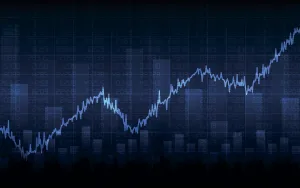Steel Tariffs 2024: Comprehensive Guide to Global Trade Policies, Impacts, and Future Trends
4 min read
Steel tariffs have become a pivotal element in global trade, affecting everything from domestic industries to international relations. As of 2024, understanding the intricacies of steel tariffs is essential for businesses, policymakers, and industry professionals. This guide delves into the current landscape of steel tariffs, their impacts on global trade, and what the future holds for these crucial trade policies.
Understanding Steel Tariffs
- What Are Steel Tariffs?
- Definition: Steel tariffs are taxes imposed by governments on imported steel to protect domestic industries from foreign competition and ensure fair trade practices. These tariffs can be applied as a fixed amount per unit or as a percentage of the import value.
- Purpose: The primary goal of steel tariffs is to safeguard local steel manufacturers from underpriced imports, encourage domestic production, and address trade imbalances. They are also used to respond to unfair trade practices such as dumping or subsidization by foreign producers.
- Types of Steel Tariffs
- Ad Valorem Tariffs: Calculated as a percentage of the import value, ad valorem tariffs increase with the price of the steel product.
- Specific Tariffs: Charged as a fixed amount per unit of steel, specific tariffs are not influenced by the product’s price, making them straightforward to calculate and implement.
- Anti-Dumping Duties: Imposed when a country believes that foreign steel is being sold at below-market value, harming local industries. These duties are meant to counteract unfair pricing practices.
- Countervailing Duties: Applied to offset subsidies provided by foreign governments to their steel producers, which can distort competition in the global market.
Current Steel Tariff Landscape
- Global Tariff Trends
- Major Players: The United States, the European Union, China, and India are some of the major players in the global steel market, each implementing varying tariff regimes based on their trade policies and economic interests.
- Recent Developments: In recent years, many countries have revised their steel tariff policies in response to global trade tensions, economic pressures, and shifts in domestic manufacturing capabilities. For example, the U.S. has implemented tariffs under Section 232 of the Trade Expansion Act, aiming to address national security concerns related to steel imports.
- Impact on Global Trade
- Market Adjustments: Steel tariffs can lead to market adjustments, including changes in trade flows, shifts in global supply chains, and variations in steel prices. Importers may seek alternative suppliers or adjust their sourcing strategies to mitigate the impact of tariffs.
- Industry Effects: Domestic steel industries may benefit from reduced competition, leading to increased production and potential job growth. However, industries reliant on imported steel, such as construction and automotive, may face higher costs and supply chain disruptions.
Implications of Steel Tariffs
- Economic Impact
- Cost Increases: Steel tariffs can lead to higher costs for imported steel, which can be passed on to consumers and businesses. Industries that rely heavily on steel imports may experience increased production costs, potentially affecting their competitiveness.
- Trade Relations: Tariffs can strain trade relations between countries, leading to retaliatory measures and trade disputes. This can impact broader economic relations and lead to increased uncertainty in international trade.
- Strategic Considerations for Businesses
- Supply Chain Management: Businesses must navigate the complexities of steel tariffs by evaluating their supply chains and considering alternative sources or materials to mitigate cost increases.
- Compliance and Planning: Staying informed about tariff regulations and ensuring compliance with trade policies is crucial for businesses engaged in international trade. Strategic planning and risk management are essential to adapt to changing tariff landscapes.
Future Trends in Steel Tariffs
- Evolving Trade Policies
- Policy Changes: As global trade dynamics shift, steel tariffs are likely to evolve. Changes in trade agreements, geopolitical developments, and economic conditions may lead to adjustments in tariff policies and their enforcement.
- Regulatory Adjustments: Governments may revise tariff rates or implement new trade measures based on economic performance and industry needs. Businesses should stay updated on policy changes and adjust their strategies accordingly.
- Sustainability and Green Steel
- Environmental Considerations: There is growing interest in aligning steel tariffs with sustainability goals. Future tariff policies may incorporate environmental considerations, such as encouraging the import of green steel or imposing tariffs based on environmental performance.
- Technological Advancements: Advances in steel production technologies and materials may influence tariff structures. Governments may support the adoption of advanced and eco-friendly steel production methods through tariff incentives or penalties.
Conclusion
Steel tariffs are a critical aspect of global trade, with significant implications for industries, economies, and international relations. Understanding the current landscape, implications, and future trends of steel tariffs is essential for navigating the complexities of global trade and making informed strategic decisions. As policies evolve and new challenges emerge, staying informed and adaptable will be key to success in the steel industry.



